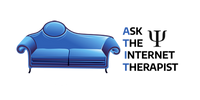Neuro Emotional Technique™
Posted by Jef Gazley, M.S., LMFT, DCC on Dec 15th 2017
|
NET™ or Neuro Emotional Technique™ is one of the newer "power therapies" that along with TFT (Thought Field Therapy), and EMDR (Eye Movement Desensitization and Reprocessing) have become popular in the last ten years. These therapies seem to work quicker than traditional talk therapies. This appears to be due in part because they target the more primitive parts of the brain. These would include the Limbic system, the Medulla Oblongata, and the Enkelphin system, which is in every cell of the body. Neuro Emotional Technique is the most powerful and versitile of these new therapies.
Dr. Scott Walker developed NET™ in the early 1980's. Dr. Walker is a chiropractor by training, who uses Applied Kinesiology or AK. AK is based on Chinese Medicine, acupuncture and the Meridian System. Chinese medicine is concerned with the body's need for balance or homeostasis. If the Chi or energy of the body is in balance then it is assumed that the body will be able to cure itself and run at top efficiency. Practitioners do this by testing acupressure or acupuncture points in the body, which are divided up into 12 main Meridian Systems. These Meridian Systems are named for the main organs of the body such as the Lung Meridian or the Liver Meridian. Each of these systems is correlated with particular emotions. The lung meridian is associated with grief and sorrow and the liver meridian with anger and resentment. pplied Kinesiology tests the Chi or energy by taking a strong indicator muscle, any strong muscle, and asking the client or patient to lock their muscle as the practitioner tries to challenge the strength of that muscle by pushing or pulling the area to see if it will hold. The practitioner might ask a client to hold their arm straight out in front of them and lock it while the clinician with an open hand firmly pushes down on the arm right above the wrist. This checks to see if the arm will hold. Almost any major muscle will work for muscle testing. The body consists of water and electricity. It is believed that muscle testing checks to see if the muscle has enough electricity in it to hold. It appears that Chi is essentially the same as this electricity. Dr. Goodheart, the father of Applied Kinesiology, first demonstrated therapy localization. Therapy localization occurs when you test a strong muscle alone or in the clear and then touch another part of the patients' body to test if a change of muscle strength occurs. If it does then dysfunction is assumed to be present in the localized area. Chiropractors who practice AK routinely test or challenge a vertebra in the neck or the back, and if the muscle goes weak then they can assume that the vertebra is misaligned or out of position in the spine. They then put the vertebra back in and retest. When the muscle is strong it is assumed the vertebra is back in alignment. The client routinely reports feeling much better. Dr. Walker adapted and built on Dr. Goodhearts' work by applying AK to the emotions. Emotions are energy. Emotions can be tested through the electrical system of the body. Therefore, if a muscle tests strong in the clear and then the NET™ recipient thinks of some issue that is upsetting, that previously strong muscle will become weak. Dr. Walker believes that what he is testing is the "emotional reality" of the body. This means that theoretically if a person believes an untruth his muscle testing will be consistent with that belief. However, the emotional belief of a client, at least when they are not psychotic, is usually consistent with reality. Therefore, if a person says "My name is Sam" and his name is Sam, a muscle test of that statement will be congruent and will hold strong. The reverse is equally true. A clinician can now test how a person is feeling even if they do not consciously know how they are feeling. A therapist can now trace present feelings and problems a person is suffering from, and discover if there is an original trauma or feeling that the present problem or feeling is reactivating. This essentially means that Dr. Walker has found the royal road to the subconscious. The ramifications of this discovery cannot be overstated. There has never been a better diagnostic indicator for subconscious reality. In my experience working with trauma survivors and children who have grown up in these environments, this technique is essential for a full recovery. These populations usually show a tremendous amount of dissociation. This essentially means that consciously they often do not know how they feel. NET™ accurately diagnoses the feelings that a client is having and the client then often reports congruence with that previously dissociated set of feelings. Then it releases it from the body by tapping on a few vertebrae that are related to the particular Meridian System that is associated with the emotion. Usually at that point several things occur. The client reports subjectively 1) A lessening of that particular feeling state that was bothering them 2) A feeling of relief and 3) Less dissociation in general and more overall integration. NET™ seems to work in several ways:
While all of these are good reasons to become proficient in NET™, with trauma work and Post-Traumatic Stress Disorder this technique is a must. PTSD is so pervasive and the symptoms are attached so securely to the body, that unless some relief to the physical part of the trauma is attained the client will remain in great distress. Neuro Emotional Technique™ is a welcome addition to a clinician specializing in this section of the field. If you want to learn more about NET™, visit NetMindBody.com |
